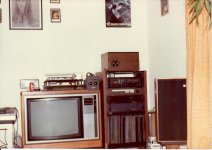Mr Peabody
Well-known member
- Thread Author
- #1
I borrowed this idea from Future Audiophile who ran an article on the subject, I thought it might be fun to see what you guys think.
I sort of laughed to myself when a member talked about building inserts to fill in gaps in his stand but as I read the said article and the responses to the members post I realized not so good aesthetics actually does bug some people. I thought about wanting to try out my friend's Krell KSA some time back but passed because it would not fit my rack and I had no place to sit it if I decided to use it. So, there are some legit concerns in this area.
Another time I was considering phono stages, a dealer showed me a small unit that was about the size of a under $200.00Creek OBH I used to own and told me it was $1800.00. I know that sound is most important but Ijust didn't consider the little box. What could be in there that cost $1800.00. I had one that was standard size with thick metal chassis that cost $1700 when new.
On the other hand I've heard criticism of componets whose had the tops taken off and the question asked what's with all the space.
I personally don't think a standard over what there is now will come about.
I sort of laughed to myself when a member talked about building inserts to fill in gaps in his stand but as I read the said article and the responses to the members post I realized not so good aesthetics actually does bug some people. I thought about wanting to try out my friend's Krell KSA some time back but passed because it would not fit my rack and I had no place to sit it if I decided to use it. So, there are some legit concerns in this area.
Another time I was considering phono stages, a dealer showed me a small unit that was about the size of a under $200.00Creek OBH I used to own and told me it was $1800.00. I know that sound is most important but Ijust didn't consider the little box. What could be in there that cost $1800.00. I had one that was standard size with thick metal chassis that cost $1700 when new.
On the other hand I've heard criticism of componets whose had the tops taken off and the question asked what's with all the space.
I personally don't think a standard over what there is now will come about.

